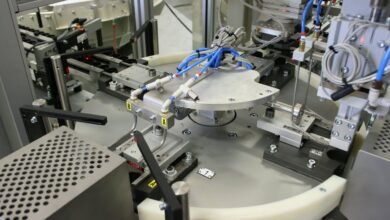
CGI animation technology is used in many movies to make natural scenery, buildings, weather events, and other parts and details of a film. Consider a future where distinguishing between an actual image and one artificially crafted on a home computer becomes impossible.
The intriguing fact is that we are already living in that future. Viewers struggle to differentiate between images produced by CGI and those that are natural. Animation studios are consistently advancing in animation, rendering, and modeling, developing technologies capable of simulating and persuading people that the images seen in movies are genuine.
Let’s see how that is rolling for filmmaking.
CGI Animation and the World of Filmmaking
The captivating scenes shown on the big screen have become increasingly convincing lately. The alien beings in “Avatar” or the sandworm in “Dune” are prime examples of how lifelike CGI can appear, enough to stir the imagination of audiences.
Though incredibly realistic, these visuals are the creations of skilled professionals working behind computer screens. With the ever-evolving trends in technology, it’s becoming commonplace to find CGI employed in nearly every contemporary film, marking a significant shift in how we experience cinema in the 21st century.
CGI Animation in Movies – A Glimpse into 2024
Even in earlier films, computer-generated images were prevalent. However, the extensive use of CGI has reached its peak today. Let us have an overview of the nature of these films and the trends picking up in CGI:
Tiger’s Apprentice (2024)
- Expectations in CGI: Given its genre of animation and also action-adventure, “Tiger’s Apprentice” will likely boast vibrant and detailed animations. The CGI could include intricate character designs, especially considering the magical and mythical elements of the story.
- Technological Anticipation: Advanced rendering techniques for realistic fur and environment textures and fluid animation for action sequences.
Kung Fu Panda 4 (2024)
- CGI Evolution: Building on the legacy of its predecessors, the fourth installment of “Kung Fu Panda” is expected to showcase top-notch animation. The focus will likely be on expressive character animations and dynamic combat sequences.
- Enhancements to Look For: Improved texture work and more sophisticated lighting and shadow play to enhance the visual depth.
The Garfield Movie (2024)
- CGI Challenges: Adapting a beloved comic character like Garfield into a CGI format poses unique challenges. The animation style might need to balance realism and also the comic’s original charm.
- What to Watch: The depiction of Garfield’s movements and expressions will be essential, possibly employing advanced rigging and facial animation techniques.
Inside Out 2 (2024)
- CGI and Emotional Storytelling: As a sequel to a film celebrated for its imaginative representation of emotions, “Inside Out 2” will likely use CGI to create vibrant, and also visually distinct worlds representing various emotional states.
- Anticipated Features: Expect creative and metaphorical visuals, with a rich color palette and fluid animation to reflect the film’s emotional depth.
Despicable Me 4 (2024)
- Continuing the Legacy: The “Despicable Me” series is known for its lively and colorful animation style. The fourth installment will probably continue this trend, focusing on cartoonish yet detailed character models and environments.
- CGI Highlights: Look out for high-energy action sequences and the depiction of the Minions, which are central to the franchise’s appeal.
Transformers One (2024)
- CGI and Live-Action Synergy: Being part of the “Transformers” franchise, this movie also will heavily rely on CGI for its robotic characters and action-packed sequences. The integration of CGI with live-action will be crucial.
- Expected Technological Use: Advanced modeling and rendering for realistic metallic textures and complex transformation sequences.
Orion and the Dark (2024)
-
- CGI in Storytelling: As a likely adaptation of a children’s book and this film might also use CGI to create a whimsical and visually enchanting world.
- Artistic Expectations: The use of color, light, and shadow in CGI will be essential, potentially incorporating a style that resonates with children and captures the magical essence of the story.
The Ethical Dimension of CGI Animation
1. Representation and Diversity in Animation
- Cultural Accuracy: CGI animation allows for creating diverse worlds and characters. However, there’s an ethical responsibility to ensure these representations are culturally accurate and also sensitive, avoiding stereotypes or misappropriations.
- Diverse Storytelling: There’s a growing need for CGI animation to include and accurately represent diverse narratives, ensuring that all groups have fair representation in animated films.
2. Impact on Children and Young Audiences
- Content Appropriateness: Given that a significant portion of CGI animation is targeted towards children and young audiences, creators have an ethical obligation to produce appropriate and constructive content for these impressionable viewers.
- Educational vs. Commercial Content: Balancing educational and entertainment values in CGI-animated content, especially for young audiences, is an ethical concern. The impact of commercial motives on the storytelling and messaging in animated films is a subject of ethical scrutiny.
3. Realism and its Effects on Perception
- Hyper-realistic Animation: As CGI animation becomes increasingly realistic, it blurs the line between animation and reality. This raises ethical questions about how such realism might affect viewers’ perceptions, especially regarding violence or fantastical elements.
- Influence on Reality Perception: For younger audiences in particular, distinguishing between animated fiction and also real-life scenarios becomes crucial. Filmmakers have the ethical responsibility to delineate fantasy from reality.
4. Environmental and Societal Impact
- Energy Consumption in CGI Animation: The high computational power required for CGI animation has an environmental impact due to energy consumption, and also Ethical filmmaking should consider the carbon footprint of producing CGI-animated films.
- Labour and Industry Practices: Ethical considerations include the working conditions and fair compensation for animators and CGI artists. As demand increases, ensuring sustainable and humane work practices in the CGI animation industry becomes vital.
5. Ethical Use of Resources and Intellectual Property
Intellectual Property Concerns: With CGI animation allowing for the easy replication of scenarios and also characters, there’s an ethical obligation to respect intellectual property rights and encourage original content creation.
Resource Allocation: The high cost of producing CGI animation can lead to resource allocation issues, where large studios may dominate the market, potentially stifling smaller, independent creators.
Conclusion
CGI animation has taken its place in the world of filmmaking. As we progress, the challenge lies in using this powerful tool wisely, ethically, and also creatively to continue the timeless storytelling tradition through cinema. The future of filmmaking with CGI animation is not just about technological advancement; it’s about expanding the horizons of imagination while staying true to the core values of cinematic art.



